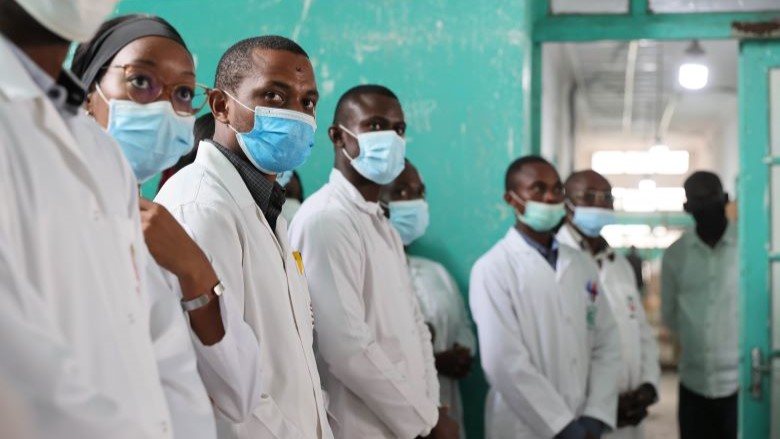Online Media Briefing Center (OMBC) news for accredited journalists
Highlights

Domestic food price inflation remains high in many low- and middle-income countries. Information from the latest month between September and December 2024 for which food price inflation data are available shows that inflation higher than 5% is experienced in 72.2% of low-income countries (3.4 percentage points higher since the last update on December 13, 2024), 43.5% of lower-middle-income countries (3.2 percentage points lower), 38% of upper-middle-income countries (5.0 percentage points higher), and 7.4% of high-income countries (3.5 percentage points higher).

Developing economies—which fuel 60 percent of global growth—are projected to finish the first quarter of the 21st century with the weakest long-term growth outlook since 2000, according to the World Bank’s latest Global Economic Prospects report.

The money saved by replacing expensive debt with cheaper financing will be used to improve education across the country. This will be the first debt-for-development swap of its kind supported by the World Bank Group.

Developing countries spent a record $1.4 trillion to service their foreign debt as their interest costs climbed to a 20-year high in 2023, the World Bank’s latest International Debt Report shows. Interest payments surged by nearly a third to $406 billion, squeezing the budgets of many countries in critical areas such as health, education, and the environment.

: Interested countries, Regional Entities, and Implementing Entities will be able to submit proposals through an online portal starting in March 2025. The third Call will be launched in two phases—the first phase will be open to single and multi-country proposals in March 2025; the second phase will open in June 2025 to Regional Entity proposals.

Alongside this record-breaking financing, the World Bank is introducing a simpler, faster, and more agile IDA, reducing policy commitments and metrics by half, giving clients more freedom to prioritize and shape their development.

Multilateral development banks (MDBs) today issued a joint statement at COP29 in Baku outlining financial support and other measures for countries to achieve ambitious climate outcomes. MDBs estimate that by 2030, their annual collective climate financing for low- and middle-income countries will reach USD 120 billion, including USD 42 billion for adaptation, and MDBs aim to mobilize USD 65 billion from the private sector.

In response to feedback from countries, the World Bank’s Climate Resilient Debt Clause (CRDC) now covers all natural disasters, including droughts, floods and health emergencies like pandemics. Previously, two types of natural disasters— tropical cyclones and earthquakes—were eligible under the CRDC, which allows eligible countries to defer principal and/or interest repayments on IBRD and IDA loans for up to two years.




